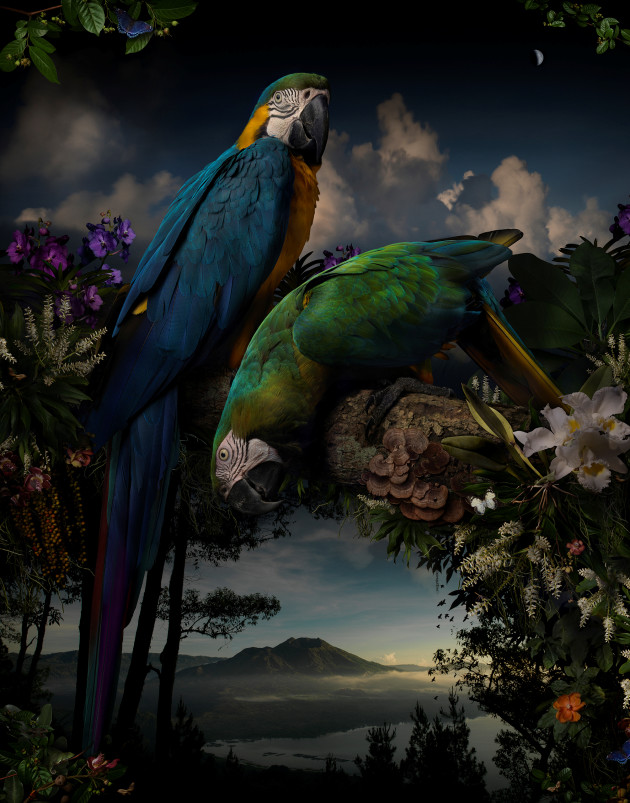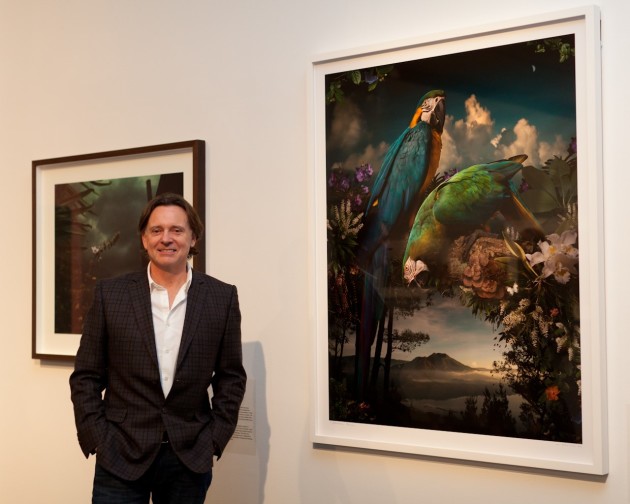Winner of the William and Winifred Bowness Photography Prize
Recently, Joseph McGlennon was announced as the 2015 winner of the William and Winifred Bowness Photography Prize. McGlennon was awarded a cash prize of $25,000 for his work, Florilegium #1, 2014. His image was chosen from a field of 2,600 images entered, and was judged by Australian artist Bill Henson, Bendigo Art Gallery Director Karen Quinlan and MGA Senior Curator Stephen Zagala. “The Bowness Photography Prize is the Archibald of Australian photography. To be selected as a finalist is a great achievement. To be the winner is great honour,” McGlennon said.

Peter Campbell (Rainshower Funningsfjordur, 2015), Daniell Shipp (Defunct industrial site, 2014) and Valerie Sparks (Le vol 1, 2014) were also awarded with Colour Factory Honourable Mentions, which acknowledges significant photographic expertise and talent.
The winner and all Bowness Photography Prize finalists will have their work presented at MGA in an exhibition that runs from 25 September to 22 November 2015.
The winner and all Finalists’ images can be viewed on MGA’s website.

About Joseph McGlennon
Having worked in London, South East Asia, Amsterdam and Australia, and now living in Singapore, Joseph McGlennon has, over the last 25 years, been a central player in the highly, visually-charged world of design and marketing. He was formerly Design Director with Landor Design Singapore, and prior to that was Creative Director with Bates Asia where he headed up the creative team on Audi and Nokia. Before his Bates experience, McGlennon was Regional Creative Director for Young & Rubicam on the Nike regional account as well as Sony, Sing Tel, Asia Pacific Breweries, Ericsson, and The Taj Hotels India. Joseph holds a BA in Fine Art from the University of South Australia and a Post Graduate Degree in Education, also from the University of South Australia.
About the winning work, Florilegium #1 from the series, Florilegium
The Latin term reconfigured in the Middle Ages; Florilegium (to gather botanicals), had its early language roots in the gathering together of scholarly church writings, into the one tome. In the 16th & 17th centuries, Botanical Gardens emerged across Europe, privately hoarding exotic world flowers and animals, signaling the rise and rise of the illustrated colour plate book. The growing desire to chorale and record the world’s flora and fauna, alongside the growing confidence in science, all fused to produce a notion of the Florilegium as a luxurious record of the rare; of important beauties to be viewed in the one vista.
Photographed in Madagascar, Tahiti and Singapore, in Florilegium Study #2, McGlennon has captured each bird, flower, vine and butterfly and created a Florilegium landscape straight from the Age of Enlightenment. There is an enchanting clash of empirical scientific observation coupled with a deep romantically lush and diffused spotlight of compassion for something wild observed for a brilliant moment before vanishing into the fog of time. This lush landscape dwells in a most complex, beautiful and sadly unreachable world.

